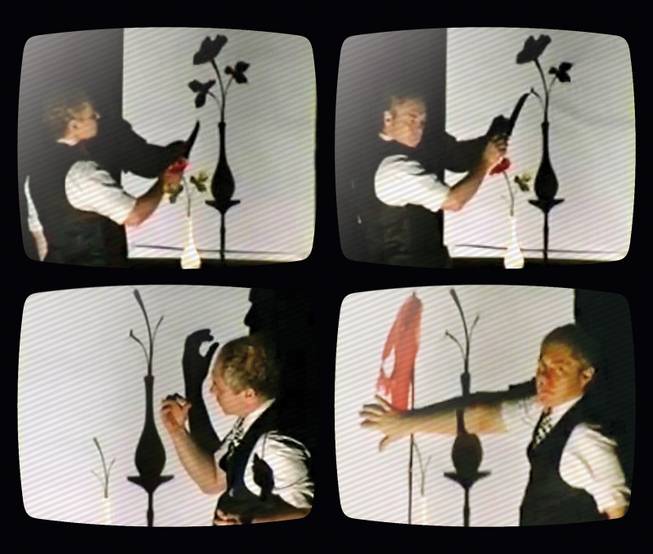
Wednesday, April 25, 2012 | 2:27 p.m.
Six weeks ago, Teller heard about a YouTube video in which Dutch magician Gerard Bakardy demonstrated a trick called “Shadows.” Bakardy was selling it. But Shadows isn’t Bakardy’s trick; it’s Teller’s.
Teller calls Shadows his “oldest and dearest original creation.” He’s performed it over 10,000 times. It’s his signature. In the trick, which is part of Penn & Teller’s show at the Rio, Teller takes a knife to a flower’s shadow and, in doing so, inexplicably severs the actual flower.
Teller contacted Bakardy and asked him to withdraw the trick from the market. He even offered to reimburse Bakardy for development costs. Bakardy, in turn, countered with a six-figure sum and a deadline. So Teller’s attorney contacted YouTube. The video was taken down. “He left me no alternative but to assert my legal rights,” Teller says.
What are Teller’s legal rights? It’s hard to say. What we do know is this: Back in 1983, Teller had the foresight to register the details of his performance with the U.S. Copyright Office. “This suit is not about revealing secrets,” Teller says. “In magic, there is often more than one way to create an illusion. The secret in a good magic trick is unseen; that’s why we call it a secret. What is seen is the illusion itself, the dramatic action onstage, and that’s what I copyrighted and have been forced to defend.”
Under copyright law, choreography, pantomime and stage directions are generally protectable; magic secrets aren’t. So if Bakardy chooses to fight Teller in court, Teller will presumably have to argue that Bakardy copied the trick’s visible movements, not just the method behind its magic.

Join the Discussion:
Check this out for a full explanation of our conversion to the LiveFyre commenting system and instructions on how to sign up for an account.
Full comments policy